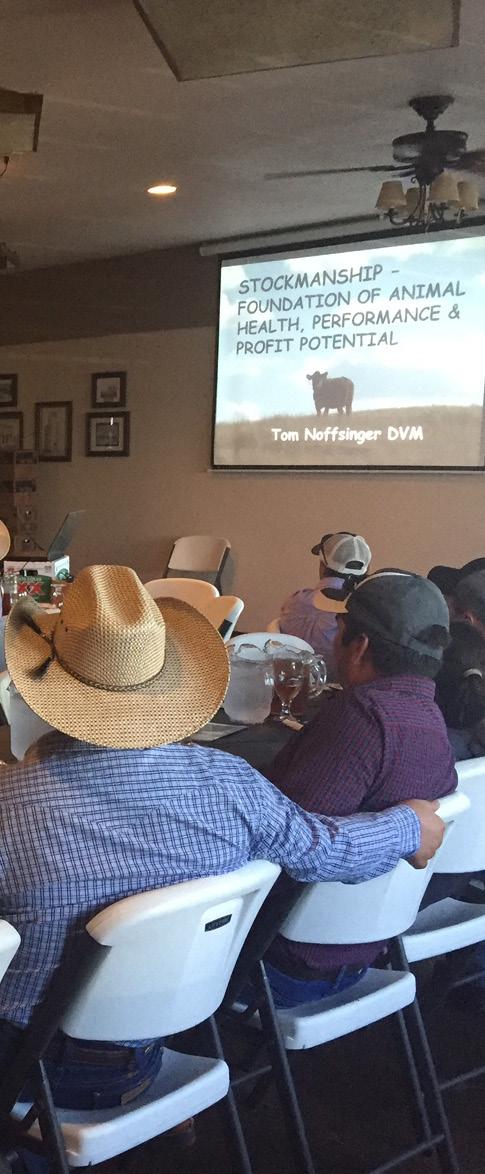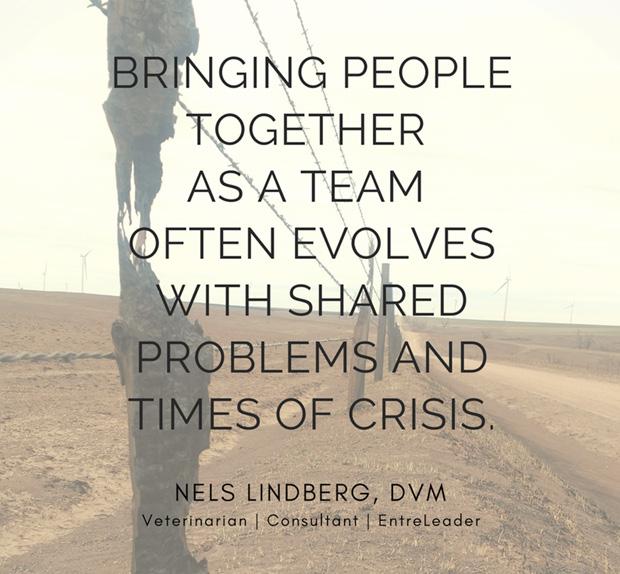
3 minute read
Be There in Times of Crisis
By: Dr. Nels Lindberg, Production Animal Consultation
The last weekend of April was a weekend a number of people in the cattle feeding industry, as well as anyone raising beef cattle, would like to forget. This particular weekend, a late April blizzard created havoc and agony for more than just a day or two. The yard that I was visiting that Monday had more than 200 deads and needed help accounting for them. We needed to perform the necropsies necessary to fulfill insurance needs and help them get things cleaned up and back to normal as quickly as possible.
These sorts of events create great challenges for everyone involved, including managers, owners, cattle foremen, feed foremen, maintenance foremen, and everyone who helps get cattle fed and watered. We live in a very complex daily environment with many moving parts, but it is on these days that we fall back to the basics and are simply challenged to ensure that cattle are fed and watered. It can feel like it takes everything within our power to do so. Generators are running entire mills. Feed trucks and pay loaders are hard to start if they were not plugged in. Tractors have to clean feet of snow. Some feed trucks have to be pulled down the alley by a tractor just to get feed out. Water lines often break, and water tanks with malfunctioning floats need freezing hands to fix them. The list of challenges goes on and on.
Even when we fight the battle to the best of our abilities, the good Lord sometimes still slaps us around and we have cattle that can not fight hard enough to survive. It is under this duress that the toll is taken on our teams. The visualization of dead cattle creates everlasting images in our heads that are very difficult to get rid of. After the last weekend of April, we had that occur and the terrible images were forever imprinted in our memory.
The last time I witnessed this was July 16 and 17, 2010, when yards I consulted had over 2,500 head of dead cattle. Four of these yards each had over 450 head of beautiful creatures lose their life. Under these circumstances, we are often “not ourselves”. We do not act as we normally would, and we do and say things that we normally would not. However, these circumstances present a great opportunity for us as leaders.

After the April blizzard, the yard called and said, “Doc, we need you here.” So, I went. It is in those times that simply “being there”, regardless of what we do, is what means the most to the people who are calling for our help on that very challenging, often disturbing day. It is in those moments, or on those days, where it is not just our opportunity but our responsibility as a leader to be there for our people. It is not a “we have to” moment but rather a “we get to” moment. If we do not seize that moment, we lose an opportunity to gain trust, faith, loyalty and great respect from a person, a cowboy crew member, a manager, a feed truck driver, a tank washer or the secretary.
It is important to be present for those moments of stress, days of complete disaster, and even for joyous once-in-alifetime events. These are not just days when environmental disaster creates great death loss of beautiful creatures, but everyday life events. It could be your head cowboy getting married. It could be your feed truck driver giving birth to their first child. It could be your secretary’s child graduating from high school. Or it could be one of your team members telling you they have been diagnosed with cancer.
Whatever the moment is, you be there! You get there! Be there for your people in their moments of celebration and in their moments of great despair and dark hours. Be the first one to congratulate them or be that beacon of hope or ray of light to help them move forward. We have all had those days and never do we forget those days. If you get there, I promise your people will walk through fire with you, for you, and maybe even in front of you! Stop what you are doing, right then, and just be there! Your people deserve it! That is real leadership!










